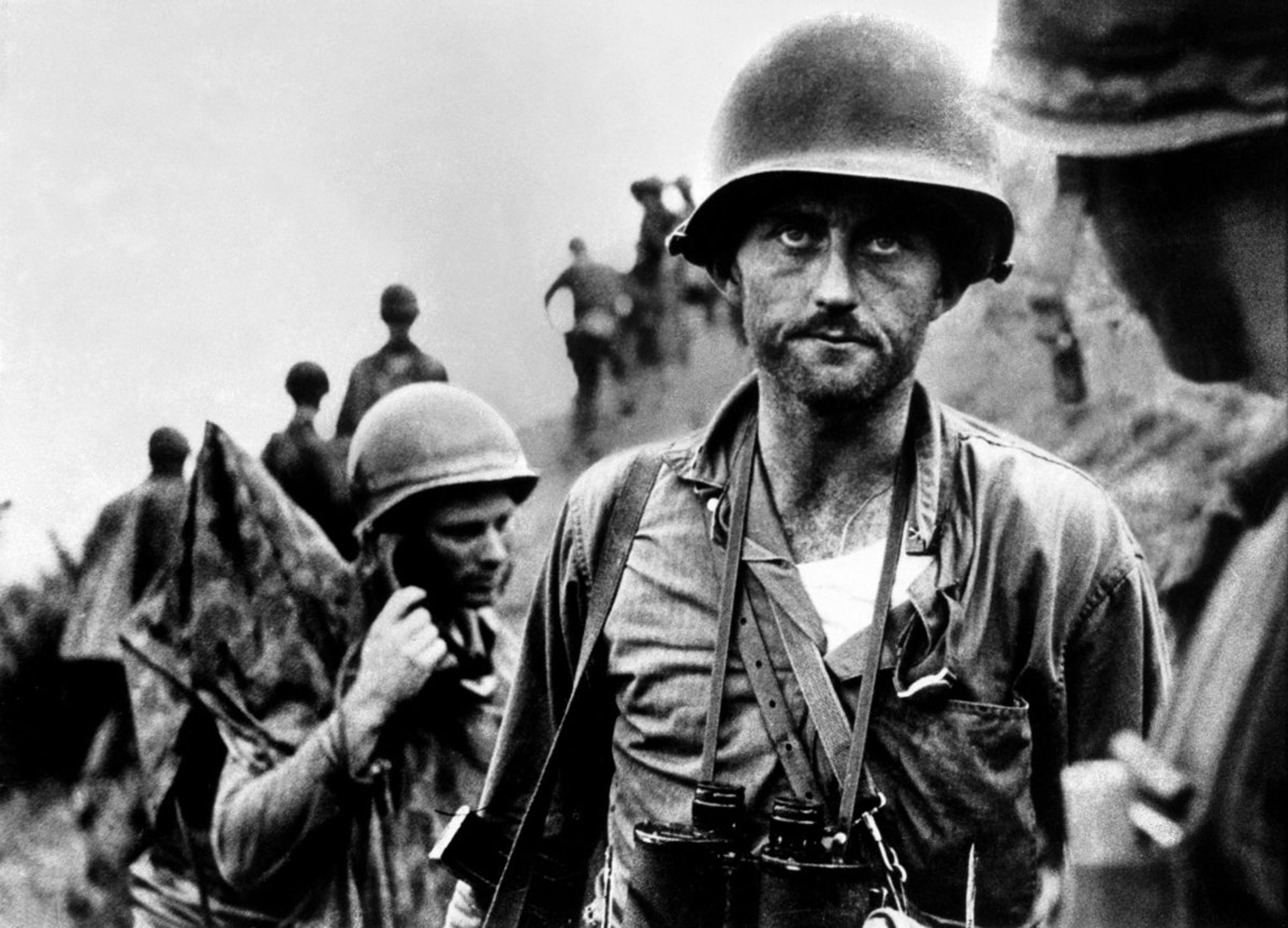
Missouri native David Douglas Duncan was born on January 23, 1916, in Kansas City. He lived through much of the 20th century, is still alive well into the 21st and remains, decades after he stopped covering armed conflicts, one of history’s preeminent war photographers. That he is so much more than a war photographer, though, is only one of the reasons that, on his 98th birthday, we celebrate his career and his incomparably productive life.
Duncan is known, primarily, as the signature photographer of the Korean War. In the pages of LIFE magazine and elsewhere, his pictures brought the brutality home to countless Americans who — understandably, with memories of the just-finished World War II still fresh in so many minds — might have wanted nothing more than to blot out the carnage being inflicted and endured in their name half a world away.
[MORE: “LIFE in the Korean War: Classic Photos by David Douglas Duncan.”]

Duncan’s photographs from Korea conveyed a searing, inconvenient truth: namely, that war is still hell, and men, women and children still die horrible deaths, even when the war in question is labeled a “police action.” But Duncan (at left, in Korea in 1950) knew war long before he made his harrowing images at Chosin Reservoir and in the rubble-strewn streets of downtown Seoul. He was there, too, in the Second World War, covering battles — and suffering shrapnel wounds — in the Pacific as a combat photographer with the Marine Corps. He was in Vietnam, a decade and a half after Korea, at Con Thien and Khe San.
The photograph above, meanwhile, made in Korea in 1950, is not only one of the greatest photos made during that “forgotten war,” but is one of the finest war pictures ever made by anyone, in any conflict. In his classic 1951 book, This Is War!, Duncan wrote of the stunned, resolute Marine captain trying to steady himself after an attack by North Korean troops, as ammunition ran dangerously low and reinforcements were nowhere in sight: “Ike Fenton, drenched and with the rain running in little droplets from his bearded chin, got the news. His tattered Baker Company Marines had only those few rounds in their belts remaining. If the Reds were to launch one more attack they would have to be stopped with bayonets and rifle butts.”
In its straightforward, unblinking portrayal of the futility, madness, endurance and, at times, the simple nobility one witnesses in the midst of a firefight or a protracted, bloody campaign, Duncan’s picture of Capt. Ike Fenton has rarely been equaled, and never surpassed. Like so many of Duncan’s pictures from Korea, it is indelible.
Talking to Duncan about his Korea pictures, meanwhile, is bracing not merely for the sharpness of the man’s memories, but for the unexpected and unsolicited declarations of a craftsman congenitally prone to speaking his mind.
“The thing that comes back to me right away, right now, when looking at these pictures again,” Duncan told LIFE.com, “is that at no time — at no time — did any Marine feel he had to look around to see what the South Koreans were doing behind him [during that war]. The Marines in Korea never feared ‘friendly fire’ or artillery coming from the South Koreans — from their allies — like they sometimes did later in Vietnam, fighting with the South Vietnamese. The Koreans could be trusted.”
[MORE: See all of TIME.com’s coverage of the Korean War.]
In the years after Korea, Duncan photographed other conflicts all over the globe, but also proved himself a sensitive portraitist and a master of place. In the past 60 years he has published books on subjects ranging from his great friend, Pablo Picasso, to the Kremlin and the Middle East (The World of Allah, 1983). He has published books on the sunflowers of France, Cartier-Bresson and an incredibly moving 100-page work on his beloved German Shepherd, Thor — a creature possessed of what Duncan characterizes as an “Olympian serenity.”
In 2003, he published his monumental and, at the same time, somehow intimate autobiography-in-images, Photo Nomad, featuring pictures and recollections from across seven decades. Every one of his many books is worth seeking out; but for anyone interested in photojournalism in the 20th century, Photo Nomad is indispensable. The range of photos it contains, and the invariably sharp insights it shares — into the creative process, human relationships and more — suggest that Duncan’s greatest work might, in fact, be the enviably full life he has led, and continues to lead.
Happy birthday, David Douglas Duncan. And thanks.
— Ben Cosgrove is the Editor of LIFE.com

More Must-Reads from TIME
- Donald Trump Is TIME's 2024 Person of the Year
- Why We Chose Trump as Person of the Year
- Is Intermittent Fasting Good or Bad for You?
- The 100 Must-Read Books of 2024
- The 20 Best Christmas TV Episodes
- Column: If Optimism Feels Ridiculous Now, Try Hope
- The Future of Climate Action Is Trade Policy
- Merle Bombardieri Is Helping People Make the Baby Decision
Contact us at letters@time.com